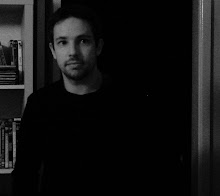I came across the Estonian artist and illustrator Eduard Wiiralt (1898-1954) in S.A. Mansbach's Modern Art In Eastern Europe, which has this to say about him:
Wiiralt's artistic career was conducted principally through the graphic arts, whose various media effectively employed to reveal disturbingly mystical and erotic incidents that he had imagined while in Paris. In his print Cabaret, the artist detailed well-attired men and diaphanously dressed women dancing in a club that might have been owned by a latter-day Hieronymous Bosch. Similarly disconcerting in its juxtaposition of the overcarefully observed and the extraordinarily imagined is the aptly titled Hell, where in the crowded jostle of heads we find contorted physiognomies and mechanical beings that might have been conjured by an obsessed modern Giuseppe Arcimboldo. Clearly, the optimism that informed the group of Estonian Artists in the 1920s had diinished significantly by the early 1930s, when Wiiralt presented his alternative to the constructed world of [Arnold] Akberg and the latter's philosophy of progress.
There's an interesting article on Wiiralt at the Baltic Times, as well as two posts on 50 Watts (which I realised having spent quite a bit of time gathering these images! Oh well). Some of Wiiralt's work isn't a million miles from the German Neue Sachlichkeit art of George Grosz or Otto Dix, while the aforementioned article describes him as "Estonia's original surrealist." There would appear to be an inexhaustible supply of bizarre, uncategorizable art from Eastern Europe.


































































.jpg)

















